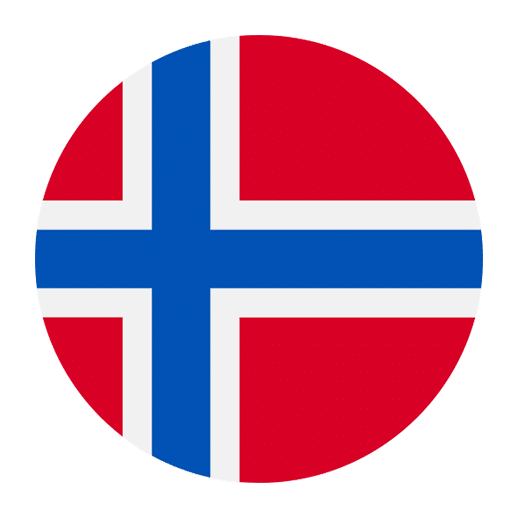Learning a new language opens doors to understanding different cultures and connecting with people on a deeper level. When it comes to Norwegian, expressing your personal interests is a great way to make conversations more engaging and meaningful. In this article, we will guide you through the essentials of describing your personal interests in Norwegian, helping you build your vocabulary and confidence.
Basic Vocabulary
Before diving into sentences and expressions, it’s important to familiarize yourself with some basic vocabulary. Here are some common hobbies and interests in Norwegian:
– Reading: lese
– Writing: skrive
– Traveling: reise
– Cooking: lage mat
– Music: musikk
– Sports: sport
– Movies: filmer
– Hiking: fotturer
– Photography: fotografering
– Art: kunst
Common Verbs and Expressions
Here are some useful verbs and phrases to help you talk about your interests:
– I like: Jeg liker
– I love: Jeg elsker
– I enjoy: Jeg liker å
– My favorite: Min favoritt
– I am interested in: Jeg er interessert i
– I spend a lot of time on: Jeg bruker mye tid på
Constructing Sentences
Now, let’s put the vocabulary into sentences. We’ll start with simple structures and gradually move to more complex ones.
Simple Sentences
Simple sentences are a good starting point for beginners. Here are a few examples:
– Jeg liker å lese. (I like to read.)
– Jeg elsker å skrive. (I love to write.)
– Jeg liker å reise. (I like to travel.)
– Jeg bruker mye tid på å lage mat. (I spend a lot of time cooking.)
Expanding Your Sentences
Once you’re comfortable with simple sentences, you can add more details to make your conversation richer. For example:
– Jeg liker å lese bøker om historie. (I like to read books about history.)
– Jeg elsker å skrive noveller. (I love to write short stories.)
– Jeg liker å reise til nye land. (I like to travel to new countries.)
– Jeg bruker mye tid på å lage nye oppskrifter. (I spend a lot of time creating new recipes.)
Discussing Specific Interests
Talking about your interests in more detail can make your conversations more engaging. Here’s how you can discuss specific hobbies:
Reading and Writing
If you enjoy reading and writing, you might want to talk about your favorite genres, authors, or the kind of writing you do. Here are some phrases to help you:
– Jeg liker å lese romaner. (I like to read novels.)
– Min favorittforfatter er… (My favorite author is…)
– Jeg skriver poesi i fritiden. (I write poetry in my free time.)
– Jeg leser ofte krimbøker. (I often read crime novels.)
Traveling
Traveling is a common interest, and discussing destinations, experiences, and future plans can be very interesting. Here are some examples:
– Jeg elsker å reise til eksotiske steder. (I love traveling to exotic places.)
– Min favorittby er… (My favorite city is…)
– Jeg har reist til… (I have traveled to…)
– Jeg planlegger å reise til… (I am planning to travel to…)
Cooking
If cooking is your passion, you can talk about the dishes you like to make, your favorite cuisines, and cooking experiences:
– Jeg liker å lage italiensk mat. (I like to cook Italian food.)
– Min favorittrett å lage er… (My favorite dish to make is…)
– Jeg eksperimenterer med nye oppskrifter. (I experiment with new recipes.)
– Jeg elsker å bake kaker. (I love baking cakes.)
Music and Art
Music and art are universal interests, and you can discuss your favorite genres, artists, and personal creations:
– Jeg liker å høre på rockemusikk. (I like listening to rock music.)
– Min favorittartist er… (My favorite artist is…)
– Jeg maler i fritiden. (I paint in my free time.)
– Jeg går ofte på kunstutstillinger. (I often go to art exhibitions.)
Making Conversations
Engaging in conversations about your interests can help you connect with native speakers. Here are some tips to keep the conversation flowing:
Asking Questions
Asking questions shows interest in the other person’s hobbies and can make the conversation more interactive:
– Hva liker du å gjøre i fritiden? (What do you like to do in your free time?)
– Har du noen hobbyer? (Do you have any hobbies?)
– Hva er din favorittbok? (What is your favorite book?)
– Hvor liker du å reise? (Where do you like to travel?)
Sharing Experiences
Sharing your experiences can make your stories more relatable and engaging:
– Jeg besøkte nylig… (I recently visited…)
– Jeg prøvde en ny oppskrift på… (I tried a new recipe for…)
– Jeg leste en fantastisk bok om… (I read an amazing book about…)
– Jeg gikk på en konsert med… (I went to a concert with…)
Practicing Your Skills
Practice is key to becoming fluent in any language. Here are some ways to practice talking about your interests in Norwegian:
Language Exchange Partners
Finding a language exchange partner can provide you with real-life conversation practice. Websites like Tandem or language meet-up groups can help you find someone to practice with.
Writing Practice
Writing about your interests in a journal or blog can help reinforce your vocabulary and sentence structures. Try to write a few sentences every day about what you did or what you plan to do.
Reading and Listening
Reading books, articles, or blogs, and listening to podcasts or watching videos about topics that interest you can provide context and help you learn new expressions.
Using Apps and Online Resources
Apps like Duolingo, Babbel, or Memrise offer exercises and interactive ways to practice your language skills. Additionally, online forums or social media groups focused on learning Norwegian can be a great place to practice and get feedback.
Conclusion
Describing your personal interests in Norwegian is not only a great way to practice the language but also a wonderful way to connect with others and share your passions. By building your vocabulary, practicing sentence structures, and engaging in conversations, you’ll gain confidence and fluency. Remember, the key is to practice regularly and immerse yourself in the language as much as possible. Happy learning!

